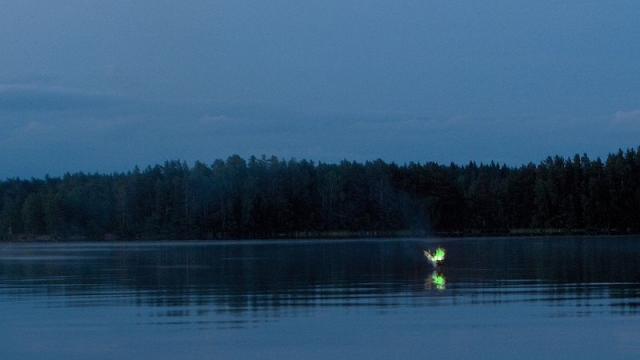People in swamps occasionally see mysterious lights in the forest, dubbed “will-o-the-wisps.” They have been attributed to spirits or aliens, but scientists say they are probably the product of resourceful microorganisms.
You’ll find phosphate, PO4, in most living things, because it helps regulate metabolism. That means you’ll also find it in the ground, since this is where most living organisms end up, especially after they have passed through the intestinal tracts of other living organisms. They get picked up plants and microorganisms, which in turn are consumed by larger animals, and end up back in the ground where the cycle starts all over again.
The phosphate remains largely intact throughout this process. In order to dismantle it, something would have to pry four oxygen atoms away from the phosphorus. That is an energy-intensive job.

Then again, there seems to be a lot of unexplained energy out in a swamp. Travellers in wet areas have often seen lights, like flickering fire, in the forest. Scientists considered the idea that methane released from decomposing matter in the ground was causing these lights, but what could cause the methane to light up in the first place?
A better candidate was a mixture of phosphine (PH3) and diphosphane (P2H4). Phosphine burns, giving off low heat. It would be an ideal candidate for these dim, flickering lights that didn’t seem to do any damage to the plants around it. Diphosphane bursts into flame on contact with air, and it is often present, in trace amounts, wherever phosphine is present.
The trouble was, no one could figure out how phosphate turned to diphosphane or phosphine. Not only would something have to rip apart phosphate, it would have to replace the bond that the phosphorus atom has with oxygen with a much less chemically desirable bond with hydrogen. What could do that?
Microorganisms could. When digesting proteins under anaerobic conditions (like underwater or inside the guts of a living thing), microorganisms were shown to release trace amounts of phosphine. In 1993, two German scientists showed that bacteria, those most inventive of organisms, also produced tiny amounts of diphosphane. Rather than being a rare event, swapping out phosphate for phosphine goes on everywhere, including, “the gut as well as the faeces and liquid manure of cattle and pigs, the faeces of man and the intestinal tract of fish”.
More recently, scientists found that certain soil conditions, like and increase in the amount of glucose, and an increase in the amount of yeast, dramatically upped the phosphine production. The phosphine-diphosphane combination accumulates underwater, bubbles up, and when it gets to the surface, it ignites. Essentially, feed a swamp a diet of protein, glucose, and yeast, and its tiniest inhabitants will burp fire at you.
